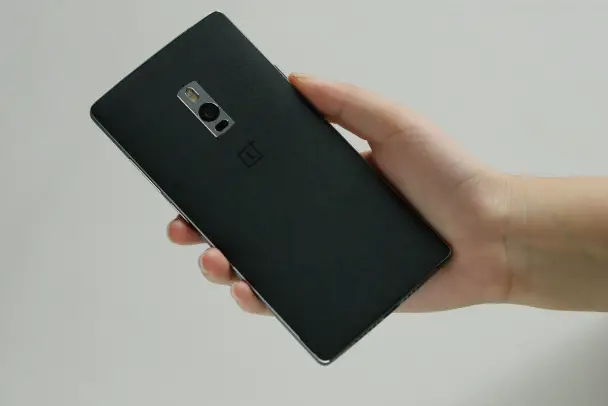The OnePlus 2 is here, get your invite ready
OnePlus has been trying to build hype around the OnePlus 2 for a little while now, and as a result revealed a good deal of information about the OnePlus 2 before the official release. Today, though, we finally got the full reveal in a virtual reality announcement about the phone that is touted (by OnePlus, at least) as the 2016 “flagship killer”.
As we knew, the OnePlus 2 has a Snapdragon 810 with 3GB or 4GB of RAM (more on that later), which we now have been told know will be behind a 5.5-inch 1080p display with 1500:1 contrast ratio, a brighter and newer panel than used in the One despite the equal size.
Capacitive hardware buttons are still included, and will appear as customizable dashes whose action can be set by the user. In other words, users will be able to choose both the order (back button on the left, please) and the function (menu or multitasking?) of the hardware buttons, as neither is distinctively marked.
The much touted camera on the OnePlus 2 comes in at 13MP just like the One, but it has been improved with OIS, a 1.3 micron sensor to improve low light photos, and laser focus. This camera will also be able to capture 4k video as well as 720p slow motion video at 120fps.
In the looks department, the OnePlus 2 deviates very little from its predecessor and ends up being similarly understated. There will, however, be 4 different StyleSwap covers available at launch, which are said to be easier and faster to swap than the previous versions.
One obvious change in design is the new fingerprint sensor on the bottom front of the phone which is said to be “faster than the iPhone” and stores five different fingerprints. The OnePlus 2 also has a hardware mute switch called the alert slider on the side, which will toggle through the Android All, Priority, and None notification options.
On the bottom of the device is a reversible USB 3 Type C port to charge the 3,300mAh battery, the first use of USB C in a US flagship. Additionally, OnePlus has managed to make the standard Type A connector (the male end of a regular USB cable) reversible as well, which is actually a design patented by OnePlus itself. This is a very simple yet welcome and practical change, as I’ve complained just a bit about microUSB in the past.
On the software side, OxygenOS is still a very lightly modified version of Android 5.1, supporting icon packs and an interface dark mode. A few custom additions include a new camera app, individual app permissions like CyanogenMod, and a “shelf” for your most used apps and contacts.
Sadly, though the phone will go “on sale” August 11, OnePlus is still using the invite system. Still, there will be more inventory to start with thanks to better estimated demand. Additionally, there will be popup stores in 9 cities around the world where people can actually see the OnePlus 2 in person and likely get an invite, giving at least a few users the ability to actually see the smartphone in person before buying.
Pricing was actually released just after the announcement, and somewhat surprisingly there are actually two versions of the OnePlus 2 that differ in more than just storage space. For $329, you can get the version with 16GB of storage, but you will also only get 3GB of ram. Bump it up to $389, and you get the full 64GB of storage and 4GB of RAM.
Personally, I don’t see much of a reason not to go for the 64GB version; I’m just hoping that it is still in stock when I manage to snag an invite. Currently, I’m in position 95,633 / 348,366 in line, so I guess we will just have to see how long it takes for the OnePlus 2 to actually get out to consumers. Here’s hoping things go a bit more smoothly and quickly than the original launch.
As a final side note, the format of the presentation was quite interesting. Even without a VR headset, I was able to “look around” as the presentation was going on by physically moving my phone, and there were actually invite codes hidden in different areas through the presentation (I wasn’t fast enough to snag any of them). Still, the presentation itself was rather dry and clearly prerecorded, not to mention that the VR forced me to face away from my desktop to see certain portions of the announcement.
Despite some shortcomings, the format was certainly something different, and interesting at least this first time. Below, you can see one of the short promotional videos shown as part of the VR presentation.



